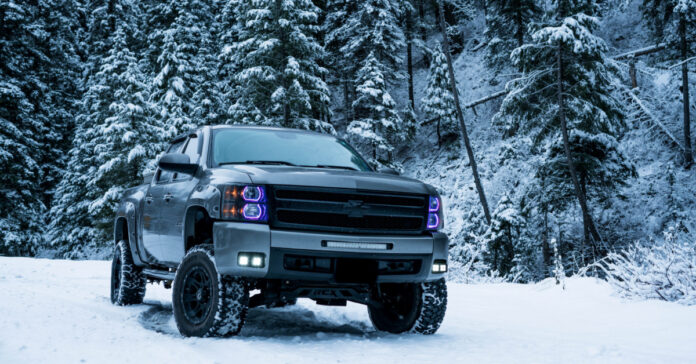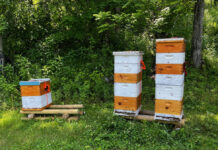We’re facing temperatures in the 20s, which means winter is here. That makes survival more difficult for preppers living in the Northeast, the upper Midwest, the Northwest or anywhere else it gets cold.
In the summer, a power outage can be an inconvenience, but in the winter, it can kill you because many people can’t heat their homes without power. We’ve talked about the problems of winter power outages before, including right after the 2021 outage in Texas that left more than 200 people dead.
Today, I want to review how winter weather may affect your plans to bug out.
Bugging Out in the Winter
Unless you live in Minnesota, Maine, Idaho or another part of the country where it is winter longer than it is summer, you probably haven’t looked at how cold weather will affect your bugout plans. Your plans are may be fine for the other eight or nine months of the year, but could have deficiencies when it is cold. We can’t expect disasters to strike only when it is warm or sunny, so consider this a reminder to evaluate your bugout plan for the winter.
Vehicles
For example, if you reside in a city and plan to bug out to a more remote location, the most obvious problem of doing so in the winter is the possibility of impassible roads due to winter weather. Even if the weather is warmer where you live, you may have to cross a mountain pass to bug out, and these passes often have snow in them because of their higher elevation. Therefore your bug out vehicle should have four-wheel drive. If you live in an area where snowfall is a constant threat, consider snow tires, studded tires (if legal) or at least have a set of chains for when you go above the snow line.
Not only can snow stop you, it will slow you down. It can stop others who will block travel lanes. It can also lead authorities to close turnpikes and interstates. Even if you know an alternate route, do you know it is passable in the snow? If you end up stuck on the highway, do you have excess fuel, and can you heat and feed yourself during an overnight stay on the highway?
If you had planned to bug out on a motorbike, an electric bike, or by pedaling, then the cold weather adds a huge complication, even if there is no snow. Most bikers put their two-wheelers away when the weather gets cold for a good reason: wind chill. And even the toughest mountain bike won’t do well in the snow. You would be better off to have a snow machine or snow bike.
Surviving the Cold
The second most obvious challenge to bugging out in the winter is surviving the cold, regardless of your method of transportation. Do you have appropriate winter bedding and clothing?
If you have a camper and plan to bugout in it, have you ever spent a few nights in it when it is below 20°F? How long will your propane-powered heater last? Will your water tank freeze? Is your sleeping bag rated for temperatures that cold? If you have solar power, will your batteries work when it is cold? The time to find out is not 36 hours after a nuclear bomb went off on a container ship in the port of New Orleans.
Let’s say you arrive at your retreat. Is it accessible by vehicle in the winter, or will you have to hike up the driveway or access road? In the latter case, can everyone in your party make it? Do you have snow shoes and a sled to pull your equipment in behind you, or do you just hope things melt?
How well equipped is your retreat? Does it have an independent source of heat? If it has a wood stove, do you have enough firewood cut, split, and ready for the season? If it has running water, will the pipes freeze and crack in the cold? If you have to carry water in a bucket, are you equipped to do so in the snow?
If your plan was to bug out to the national forest and “survive in the wild,” have you ever considered what the winter might do to those plans?
And if you planned to walk or hike to your bugout destination, are you going to be able to do that in the snow and ice? Have you practiced your winter survival skills?
Other Issues
Here, in no particular order, are some other challenges you may face if you have to bug out in the winter:
- There are fewer daylight hours
- People more often get sick in the winter, especially with the flu, RSV or COVID
- Engines are more likely to not start in cold weather and mechanical devices are more likely to fail
- You can die of hypothermia
- Everything you do to survive is more difficult when it is cold
That last line is key. Everything you take for granted becomes complicated when it is cold and snowy. Everything from lighting a fire to pooping in the woods is easier in July than in January. And don’t get me started on things like harvesting food in the wild, doing laundry, or standing guard.
Do a Winter Check
Survival in the winter is possible, even in remote locations or in primitive conditions. The key is to be prepared for the cold conditions.
Have a plan for what to do if you have to bug out as a heavy winter storm is rushing your way. Likewise, if you have a retreat of your own, make sure it is comfortable in the winter. The best way to do so is to spend a week there in February. You’ll find every corner that needs better insulation, every window pane that needs to be caulked, and every door that needs weather stripping. You’ll also see how fast you burn firewood. Chances are, you will develop a list of improvements and gear you want to have for the winter. You will also get to see how the local municipality handles snow removal and if your road remains passable.
Like anything, winter survival depends on being well prepared. Now is the time to prepare for the cold and to give your preps a real-world winter test.








Just an additional reminder – ANYTIME you leave the house you should dress like you will have to WALK home!
Comments are closed.